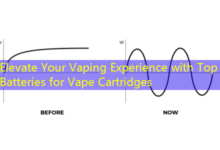The Rise of Vaping: Numbers That Matter
The vaping industry has witnessed unprecedented growth over the past decade, leading to a thriving marketplace for consumers and businesses alike. Numerous studies and reports highlight the changing landscape, revealing projections and statistics that underscore the significance of deals and offers in this sector. It is crucial for both consumers and retailers to be aware of these figures to navigate the market effectively.
1. Market Growth: A Financial Perspective
In 2022, the global vaping market was valued at approximately $20.80 billion, with expectations to reach around $45.59 billion by 2028. This rapid increase exemplifies the growing consumer interest and the entrance of new retailers into the vape market. The surge in value not only reflects a growing acceptance of vaping as an alternative but also underscores the importance of strategic deals that retailers offer to maintain competitive advantage and attract larger customer bases.
2. A Demographic Shift in Vaping
A significant 50% of vape users in the United States are aged between 18 to 29 years, highlighting a demographic that is particularly receptive to new trends. This age group is often attracted to promotional deals, which can be instrumental in their decision to choose a particular brand or product. Retailers targeting this demographic are increasingly implementing discounts and bundles as strategies to tap into a market that shows high potential for loyalty and repeat purchases.
3. The Appeal of Discounts and Promotions
Approximately 70% of consumers report that promotional deals significantly influence their purchasing decisions. For vape retailers, this statistic implies that competitive pricing and attractive offers can play a pivotal role in consumer attraction. Retailers frequently utilize deals such as “buy one, get one free” offers or substantial reductions during holiday sales to entice new customers and retain existing ones.
4. Importance of Online Sales
A staggering 85% of vape purchases are now made online, revealing a shift in consumer purchasing behavior facilitated by the convenience of e-commerce. Online platforms offer frequent deals and exclusive promotions that physical stores struggle to match. As consumers become more comfortable purchasing vaping products online, deals become a central feature in marketing strategies aimed at capturing this expanding market.
5. Vape Types and Their Pricing Dynamics
The types of vaping products also significantly impact their pricing strategies. E-liquids account for about 30% of sales within the industry, while devices make up approximately 45%. Different products attract specific consumer segments, which in turn influences the types of promotions that retailers create. For example, starter kits may be sold at a discount to attract novices, while premium e-liquids might focus on loyalty programs to retain seasoned users.
6. Social Media’s Role in Promoting Deals
The influence of social media on the vaping industry is profound, with brands utilizing platforms like Instagram, Twitter, and TikTok to promote their deals. Research indicates that around 60% of vape users discover new products through social media channels. As brands engage with influencers who can reach wider audiences, targeted promotional strategies become crucial to leveraging social media’s extensive reach.
7. Regulatory Impact and Its Effects on Deals
With new regulations continuously emerging in different jurisdictions, the vaping market faces unique challenges. Regulatory measures can impact product availability and pricing. In response, approximately 40% of retailers reported adjusting their promotional strategies to comply with evolving laws while still attracting customers. Understanding these regulations is paramount for both retailers and consumers to navigate deals safely and legally.

8. Forecasting Future Market Trends
Industry experts project that the vaping market will evolve further with innovations in product offerings and marketing strategies. By 2025, it is anticipated that more than 30% of sales will come from new, innovative products designed to enhance user experience. Retailers will need to adapt quickly and strategically to incorporate new deals that resonate with changing consumer preferences.
Conclusion
The vaping industry is not merely defined by the products it offers but significantly by the strategic deals that attract consumers. As the market continues to grow, understanding the statistics and trends becomes essential for both retailers aiming to capitalize on this profitable wave and consumers seeking the best value for their purchases. Knowledge of market dynamics will foster more informed decisions in this exciting and evolving sector.








